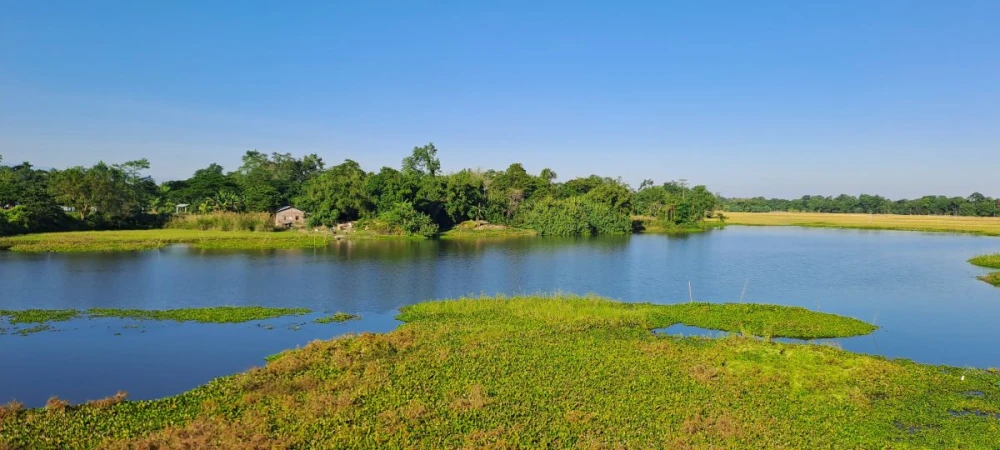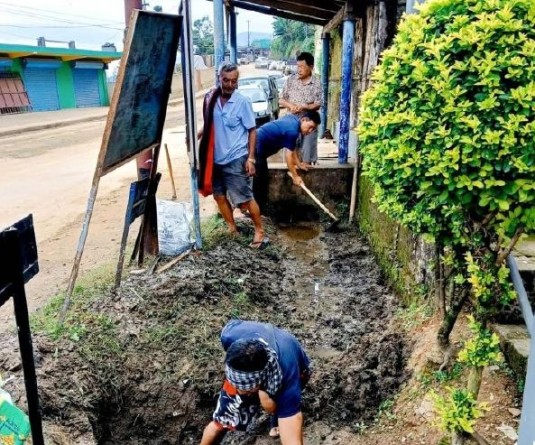Majuli - The largest river island BY Udit Kapoor

Anupa Roy
Rice. Asia’s staple food, and food to east, south and northeast India. Its history goes back to the early Holocene Age (when earth started to warm up after the last Ice Age), 10 to 12 thousand years ago.
Traces of rice were found in 7000 BCE South China along River Yunnan and 6500 BCE North India. Exactly when we started to cultivate it, is still under research.
In this long relationship, cultivated rice terrains adapted in different regions to different geographies and climates. Thousands of rice varieties came about, each unique to its wetland type habitat.
These agro ecosystems support local freshwater fishes, crustaceans and small mammals and reptiles. Many birds too, use rice terrains as migratory stopovers. Even endangered species like the Sarus crane and Bengal florican nest here. Scientists feel this co-existence help to increase rice productivity by controlling pests and even lowering methane emissions.
Majuli is a long island between the Brahmaputra and its branch the Subansiri, near Jorhat, Assam.It was in the Guiness World Record as largest river island. In the 1750s a huge flood (result of an earlier earthquake) changed the course of the Brahmaputra and created Majuli.
Inhabited mainly by Mising and Deori tribes of Tibeto-Burman and Sino-Tibetan origin, they brough rice cultivation with them. Over time they developed a deep knowledge of their island and adapted their rice cultivation. This traditional ecological knowledge (TEK) gave rise to baodhan – a deep-water rice.

Monsoon brings floods during a large part of therice-growing season in Majuli. The islanders considered the floods as natural and life-giving; it brought rich silt from upstream, allowing them to grow rice organically. The result – baodhan which can grow even when submerged.
Baodhan is a type of deep-water rice. Deep-water rice has over seventy landraces found along the Brahmaputra floodplains. Baodhan of Majuli is able to grow submerged for most of its growing cycle. Baodhan, as well as other deep-water rices have long, hollow stems which rise above the waters and allows the plant to breathe. It also has longer leaves and tends to ripen just as the waters begin to recede. Its growing cycle is ten months.
Majuli’s other rice bora saul and its derivative komol saul has already got a GI (geographical indicator tag). Komol Saul (or tender rice) can be eaten without being cooked!
Recent scientific research shows baodhan is directly related to wild rice species especially the aus rice harvested in autumn(most aus rice has disappeared since fast growing hybrids were introduced). So baodhan has greater genetic diversity. Being water submerged, it has developed a resistance to rot and pests. It is found to be more protein rich and nutritious than many other varieties. It is now being called ‘climate smart rice’ as global warming is raising sea-levels and more lowlands are in danger of flooding.
Majuli farmers are experts in managing these rices.
With rise in built-up area in Majuli, and alarming 60% erosion of its river-banks, rice farming is losing its attractions. The islanders feel doomed. There are attempts to protect Majuli’s riverbanks by governments, but farmers and islanders are turning to other incomes and newer rice varieties. Migration too is high.
We have lost thousands of landraces to hybrid industrial rice farming which are not climate-proof unlike local varieties. Existing landraces like baodhan and other deep-water rices of Northeast India are a resource to be nurtured, and their farmers livelihoods safeguarded.




